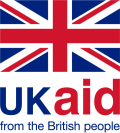You are here

Share
Related Links
Making forest concessions in the tropics work to achieve the 2030 Agenda: Voluntary Guidelines
Sustainable Wood for a Sustainable World
Keywords
Authors/Partners
FAO
Forest Concessions Management
CONTEXT
In collaboration with the World Bank, with financial support from PROFOR, this FAO-led activity aims to develop guidelines for forest concession and construct lessons learned and best practices, building on FAO’s Forest Concession Initiative (FCI), while capturing trends and needs brought up by new realities, such as climate change strategies and the Sustainable Development Goals (SDGs). The results of the activity are aimed to benefit national and subnational forest management and land use planning agencies, community forest managers and other international NGOs and forest management stakeholders.
CHALLENGE
Forest concessions are an important instrument used for allocating public forests to a private entity. It is used as a contract to establish the rights to harvest in a given forest area and regulate responsibilities, prices, incentives and sanctions of the government and the concession holder. Most typically, forest concessions are granted to companies, but there are also cases of concessions granted to communities. Forest concessions are adopted in all parts of the world, especially in and tropical forests, and are an important tool for sustainable forest management (SFM), especially considering that the majority of forests in tropical forests are public. Forest concessions, which can be granted through different contractual arrangements, can enable a wide range of socioeconomic benefits, such as security of tenure, increased income, access to social services and local development.
Forest concessions have the potential to be instrumental in achieving progress towards the SDGs, especially by creating more sustainable terrestrial ecosystems that can alleviate poverty, and contribute to climate change mitigation and adaption. Despite these potential benefits, results from forest concessions in tropical forests remain dismal, constrained by weak local governance and global timber market failure to reward sustainable forest management.
In the FAO-led Forest Concession Initiative (FCI), results suggest that forest concessions are very heterogeneous and have been implemented to respond to different, and not always clear, policy objectives, and most typically in weak governance environments. As a result, forest concessions are often perceived negatively and are often associated as being drivers of forest degradation and social inequality. Questions also remain about their financial and economic feasibility. The FCI points to the need of building on lessons learned from the experience with forest concessions in tropical forests to inform the processes in allocating public production forests. This program, therefore, follows up on FCI’s results by developing guidelines for forest concessions, building on lessons learned and best practices, while capturing trends and needs brought up by new realities, such as climate change strategies, the SDGs and the countries’ Nationally Determined Contributions (NDCs).
APPROACH
This activity will be led by FAO, in collaboration with PROFOR, by conducting the following tasks:
-
Analytical framework with a typology of forest concessions, including policy objectives, legal aspects and contractual arrangements, scope of forest management (objectives and activities), main stakeholders, and monitoring and evaluation.
-
Conduct surveys targeting a wide range of stakeholders from the public and private sectors including concessionairis, community organizations, policy makers, private sector bodies involved in forest concessions and alternative allocations models to help identify enabling conditions for effective management of public production forests in tropical countries and to investigate forest concession’s contribution to achieving the SDGs and NDCs.
-
Stakeholder review and validation workshops that target the three focus regions—West and Central Africa, Southeast Asia and Latin America—and bring the key stakeholders together to discuss, validate and further elaborate the draft framework principles and guidelines.
-
Final guidelines and publication.
RESULTS
The final report was launched in May 2018 and is available here and from the FAO website.
For stories and updates on related activities, follow us on twitter and facebook, or subscribe to our mailing list for regular updates.
Author : FAO
Last Updated : 05-31-2018








